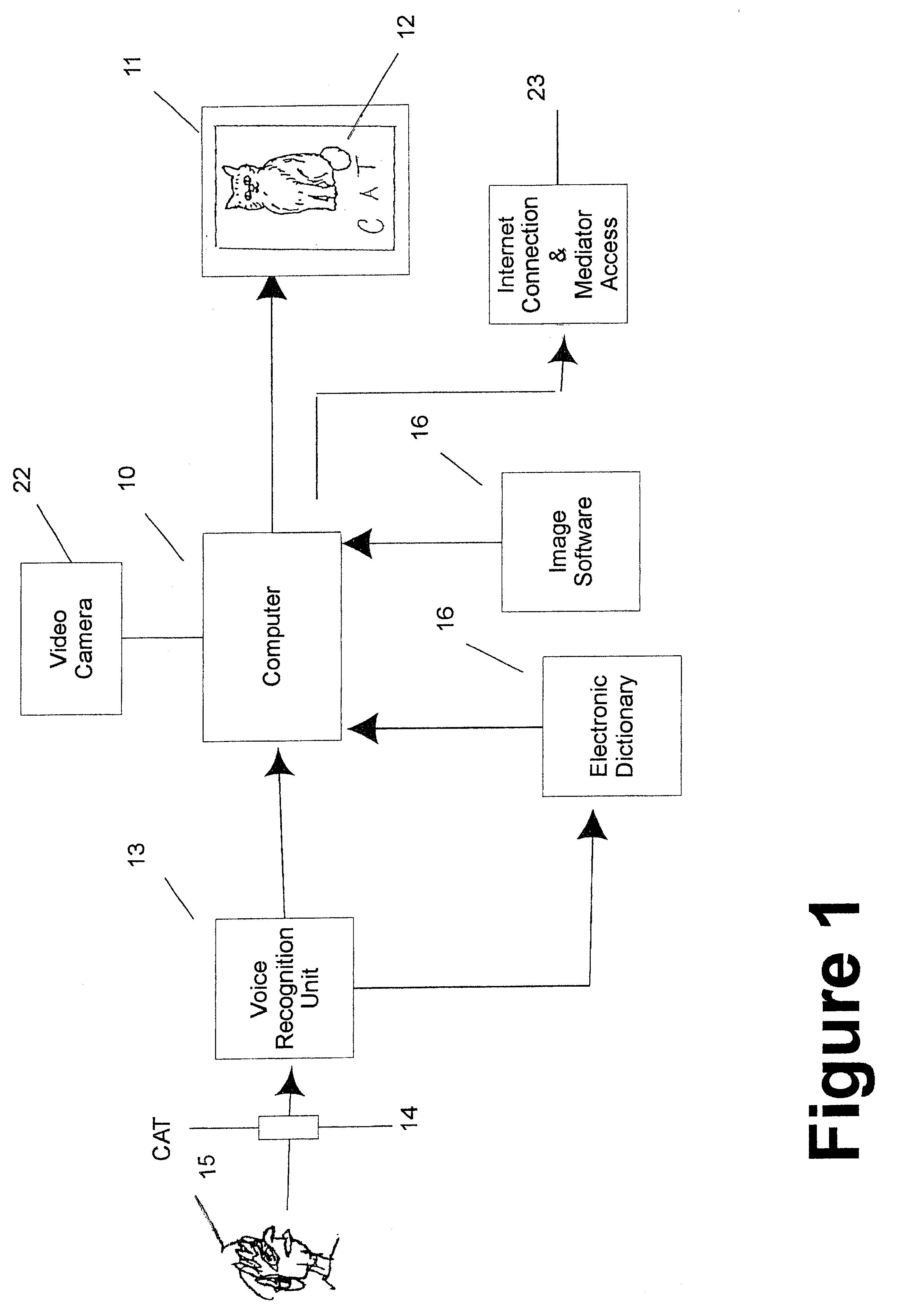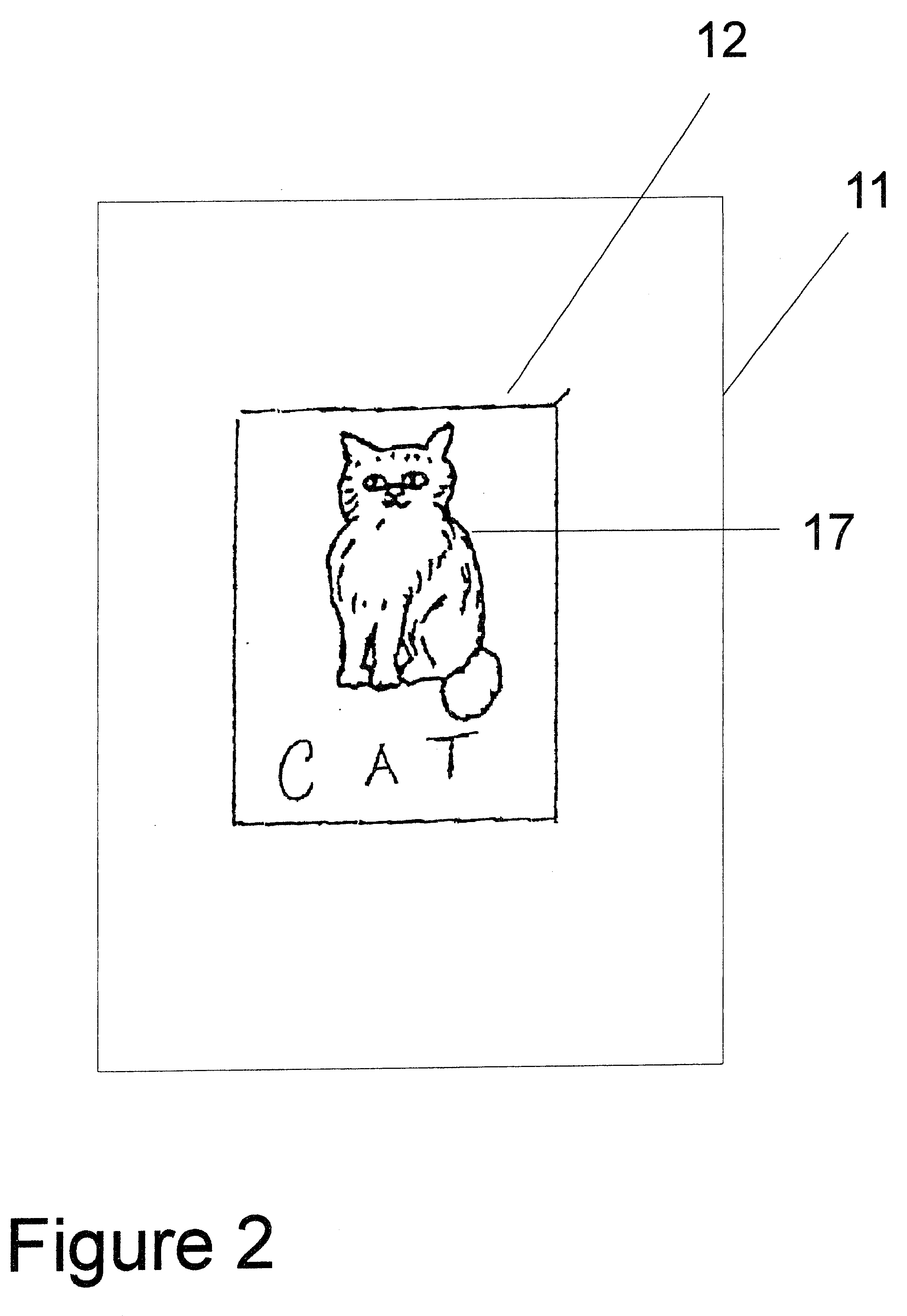Virtual learning environment for children
a learning environment and virtual environment technology, applied in the field of self-teaching systems and methods, can solve the problems of inability to learn a skill, limited potential of such environment, and inability to meaningfully express feelings, so as to improve the motor skills of children
- Summary
- Abstract
- Description
- Claims
- Application Information
AI Technical Summary
Benefits of technology
Problems solved by technology
Method used
Image
Examples
Embodiment Construction
The Virtual learning environment system of this invention is an improvement to commonly assigned U.S. patent application, Ser. No. 09 / 025,347, filed Feb. 18, 1998, to Spector entitled Phonics Training Computer System For Teaching Spelling & Reading, now U.S. Pat. No. 6,227,863, which is herein incorporated by reference in its entirety.
The virtual learning environment system of this invention is shown in FIG. 1. In its simplest form, the system comprises a general-purpose programmable computer, such as personal computer 10, a visual display device 12 (preferably a touch screen visual display device), and appropriate input / output devices such as a microphone and / or speaker, a keyboard, a mouse, and a video camera 22, and could also include a single switch input device (joy stick). Computer 10 also has access to the Internet via Internet access port 23. Depending upon the age and the extent of the user's physical abilities, either the touch screen video display device, microphone, the ...
PUM
 Login to View More
Login to View More Abstract
Description
Claims
Application Information
 Login to View More
Login to View More - R&D
- Intellectual Property
- Life Sciences
- Materials
- Tech Scout
- Unparalleled Data Quality
- Higher Quality Content
- 60% Fewer Hallucinations
Browse by: Latest US Patents, China's latest patents, Technical Efficacy Thesaurus, Application Domain, Technology Topic, Popular Technical Reports.
© 2025 PatSnap. All rights reserved.Legal|Privacy policy|Modern Slavery Act Transparency Statement|Sitemap|About US| Contact US: help@patsnap.com



